
Last year, we published a children’s book about SEO.
We didn’t hire any consultants for this project. We didn’t create fancy presentations to justify the book to stakeholders. And we didn’t crunch any numbers to verify the potential impact on our brand awareness.
In fact, no one in SaaS, let alone our competitors, had done it before.
We just had a simple thesis:
- Parents travel to conferences
- Parents want to bring home something for their kids
- Parents get some kudos from their kids
- Parents remember that they got the kudos thanks to Ahrefs
- ???
- Profit
Even though we had no prior data, we trusted our gut. And our intuition was right. The book was a big hit. People couldn’t get enough.

Look at the social media shoutouts we’ve gotten:
Starting the SEO education young with my son. Thank you to .@ahrefs .@timsoulo for the lovely SEO themed children’s book. pic.twitter.com/WLj6lqDSrv
— James Norquay (@connections8) August 6, 2024
In love with this beautiful children’s book edited by @ahrefs to explain what is SEO. 😍
Charming story written by @timsoulo about Jessy, a girl who climbs Mount Fjoogle (with special presence of black hat and Twitter).
Congrats for the illustrations of White Haired SEO! 🤩 pic.twitter.com/YRNEDkXTsB
— Clara Soteras (@ClaraSoteras) February 12, 2024
In the realm of marketing, no data models will ever tell you to make a children’s book. But we took a leap of faith anyway, believing that standing out required something bolder than the numbers could justify.
The fundamental goal of marketing is to stand out and differentiate ourselves from our competitors. Yet, if you look at the world of marketing right now, you’ll think that our job is to replicate.
Logos look the same:
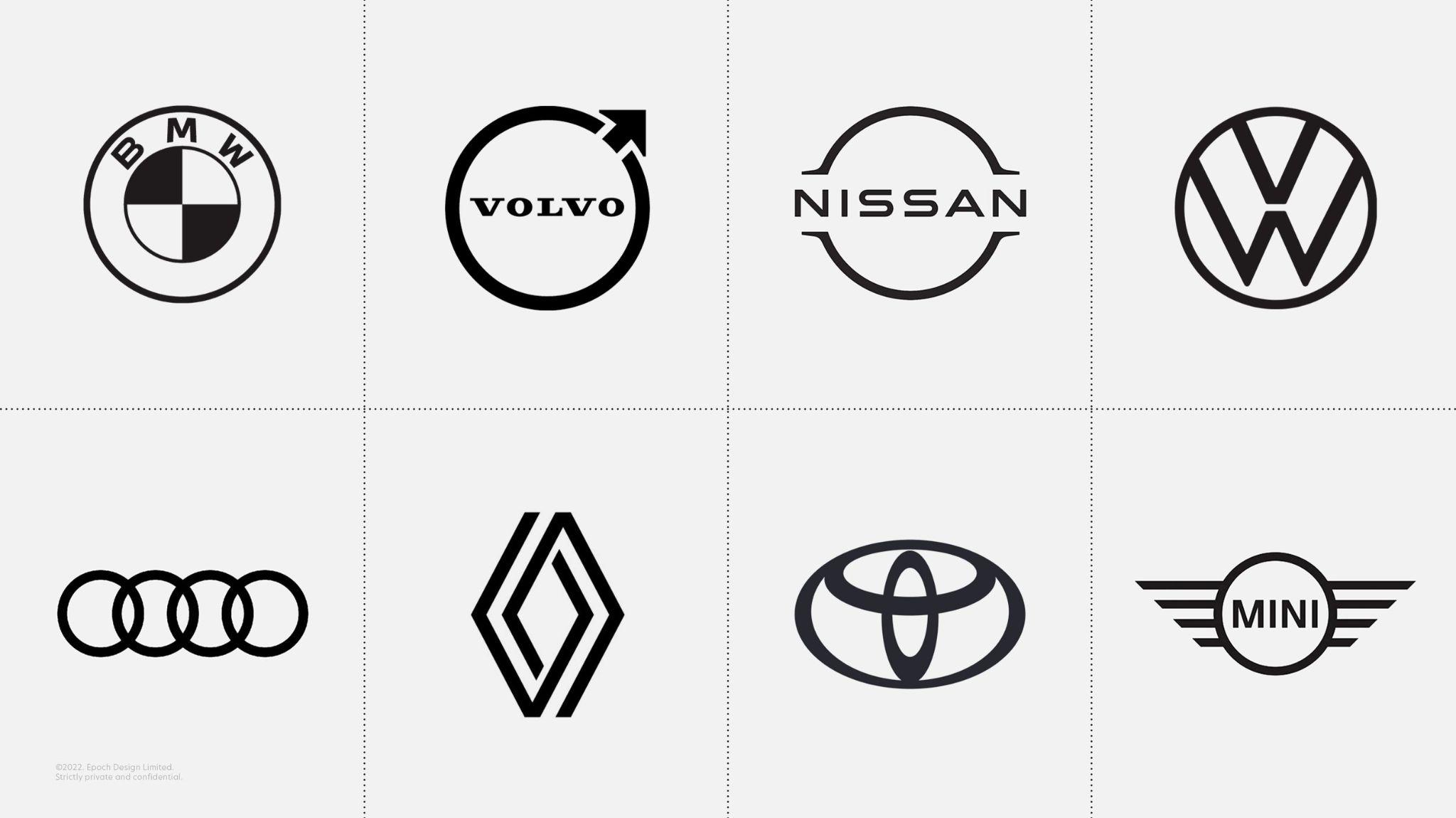
Source: Alex Murrell
So do brand websites:
I guess there’s a new trend in SaaS homepage design 😆 pic.twitter.com/5qhQOCVBi5
— Tim Soulo 🇺🇦 (@timsoulo) July 12, 2019
Wendy’s was the first trash-talking brand on social media, but today, every brand is fighting to be the most edgy.
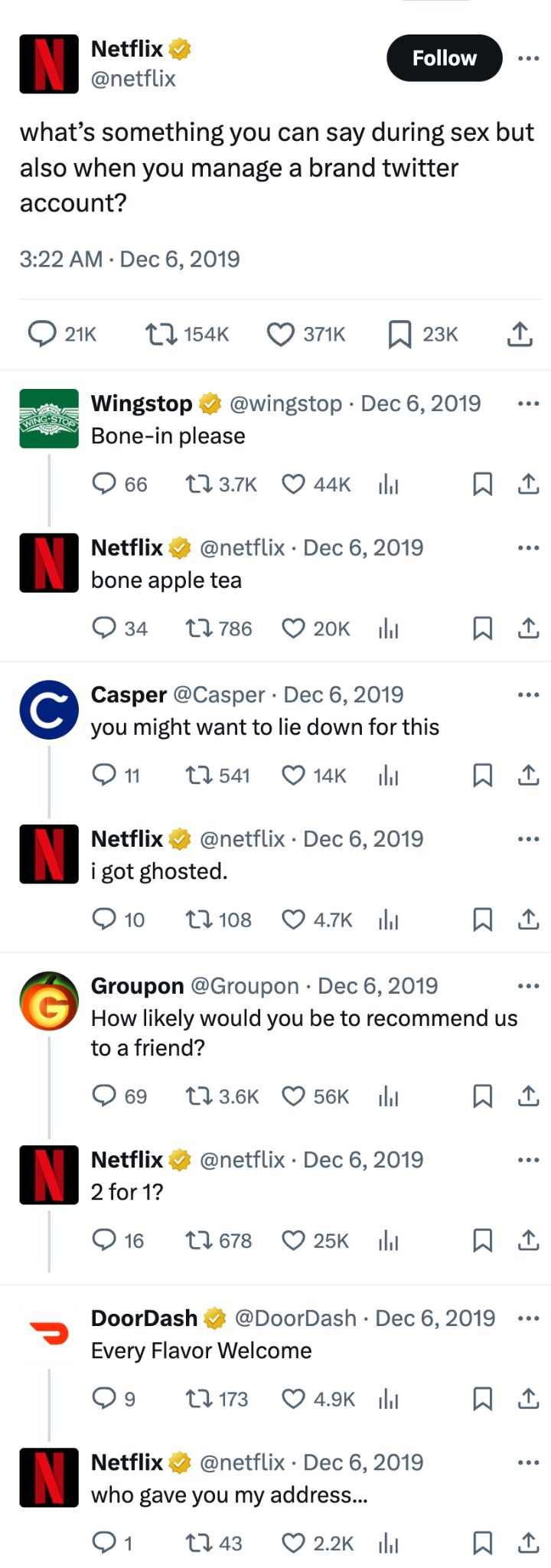
Once something works, every brand rushes to copy it. But in doing so, they become indistinguishable from one another, losing the unique qualities that could set them apart.
They become one with the clutter of the marketplace.
Perhaps it’s not our fault. After all, most of the marketing channels we rely on today—TikTok, Instagram, Google, YouTube, X—they’re all algorithmic.
While we love the data these platforms give us, we have to admit they encourage us to produce content that’s safe, replicable, and primed for clicks, likes, and shares.
Since we’re all trying to win the same algorithms, we end up making the same things:
- Every K-pop release follows the same promotional strategy: Design a choreography to fit the vertical video format, make it a dance challenge, and hope it goes viral on TikTok.
- How did recipes online become the length of Tolstoy novels? Because when something ranks #1 on Google, everyone copies it. Same titles, same subheadings, same content—now everyone has to suffer through the history of pasta to cook a 10-minute aglio olio.
- On YouTube, clickbait titles, MrBeast thumbnail styles, and quick cuts reign supreme, with every creator mimicking the formula for fear of falling behind.
This is the algorithm’s stranglehold on marketing—the force that flattens creativity and turns everyone conformist.
Ad executive John Wanamaker once said, “Half the money I spend on advertising is wasted; the trouble is I don’t know which half.” He would have been delighted by the data revolution, because it completely transformed marketing.
For the first time, marketers could stop guessing and start knowing.
We could see exactly how many times a keyword was searched for, how many people clicked on each Facebook ad, and how many people opened our emails. Finally, marketing wasn’t about throwing darts in the dark.
Every campaign could be fine-tuned to perfection, saving money and maximizing returns.
But optimization has its downsides.
Optimization encourages focusing on what is proven to work, rather than what’s novel. It favors safe, incremental adjustments, rather than bold, creative, potentially risky choices.
It moves marketers towards a local maxima. It ensures that we climb higher on the same boring hill, even though the answer lies in making something completely new.
What’s worse is that the data we rely on might not be as solid as we think.
Email open rates? They’re often inaccurate due to blocked tracking pixels. Performance marketing? AirBnb famously cut $542 million in ad spend and saw no impact on sales. And then there’s the fact that up to 50% of Internet traffic could just be bots.
The same data revolution that we’re obsessed with could be just a boondoggle.
Is that what we were sacrificing our creativity for?
Last year, we sold links. Even though buying links is against Google’s Terms of Service and therefore frowned upon.
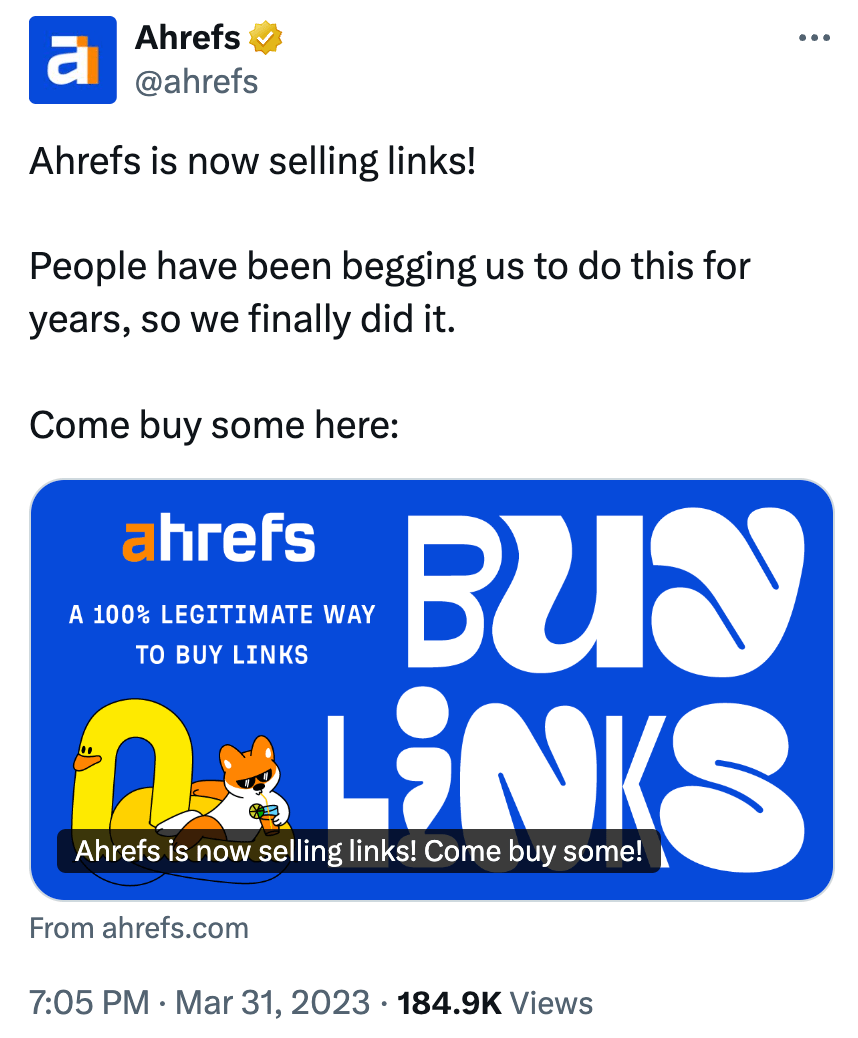
I’m kidding—we didn’t. It was an April’s Fool prank. We simply made cute images of links and sold them as NFTs.
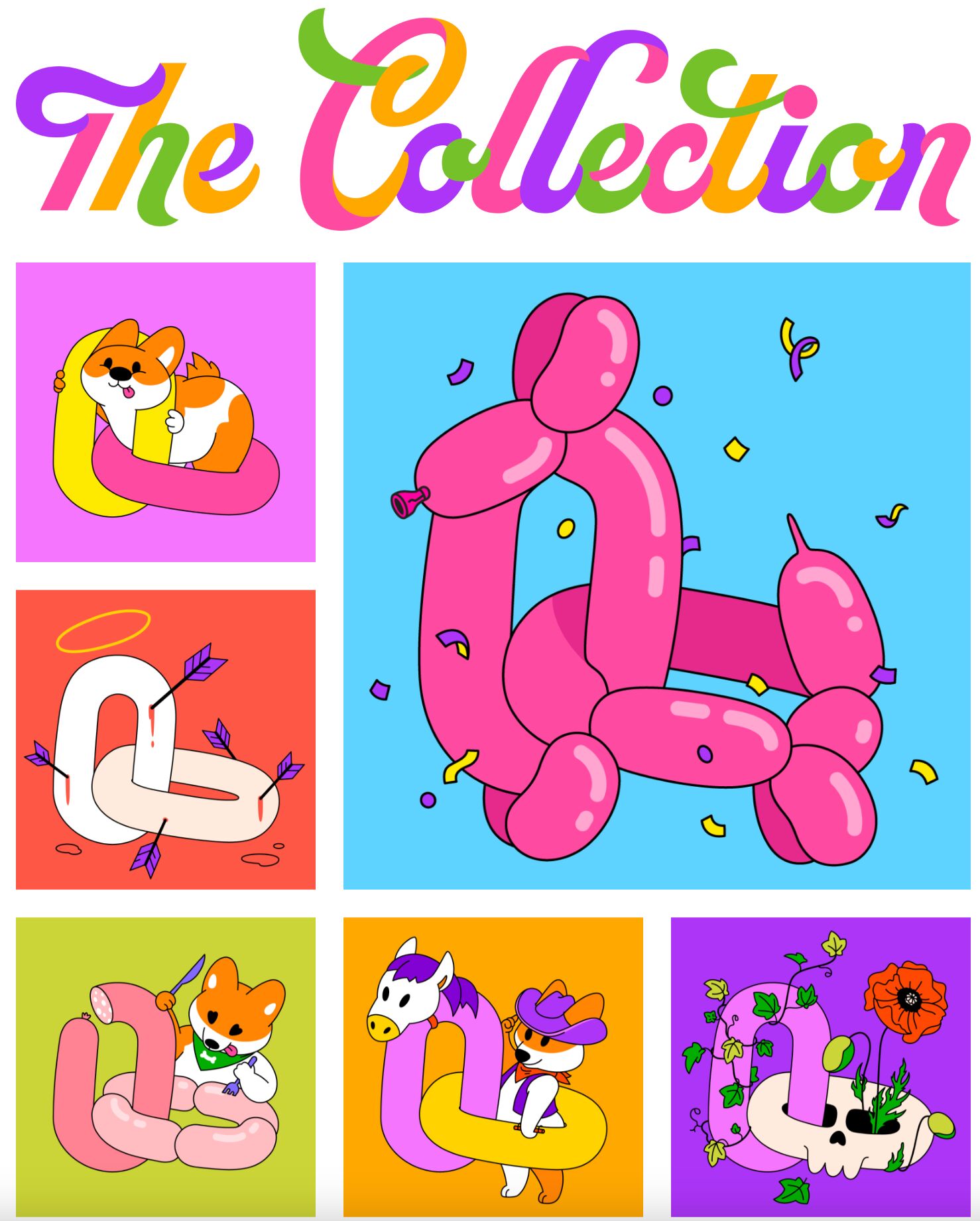
Ha, jokes on you —we didn’t even mint them. You can right-click and save all you want. Most importantly, the community enjoyed our little prank.
A few years ago, when we sponsored BrightonSEO, we made coffee cups with keyword metrics for participants:

Our homepage design is drastically different from others in the same industry. We even made our own typography.
Last year we ( @ahrefs ) have hired a font designer to create a custom font for our brand, which would take our visual aesthetic to a whole new level.
Well, let me present to you…
Ahrefs Font-face! 🥳
We’ll be gradually rolling it out in our interface and visual materials😍 pic.twitter.com/6Jpm2bmEVz
— Tim Soulo 🇺🇦 (@timsoulo) January 30, 2020
I don’t want to say we knew these ideas would work. They’re “bets” for a reason. We could have lost money and wasted our efforts. Or worst—become a laughing stock in the industry and accidentally generate bad PR for ourselves. But we had an intuition, we experimented, and then we accepted the consequences.
I think that’s what made them great. By choosing to take risks, we were able to make an impact on an industry that’s typically known to outsiders as “boring”.
Marketing wasn’t meant to be a race to the bottom, where every brand copies the same formula, optimizes for the same algorithms, and makes little tweaks endlessly. There are only so many types of blue you can change your CTA button colour.
When everyone zigs, you zag.
Recently, we had a marketing offsite where our Chief Marketing Officer, Tim Soulo reiterated that he doesn’t mind the marketing team ‘failing’.
In fact, embracing failure is one of the reasons why we’re willing to make these bets in the first place. Our company’s entire philosophy revolves around doing it first, then only doing it right, and later on better.
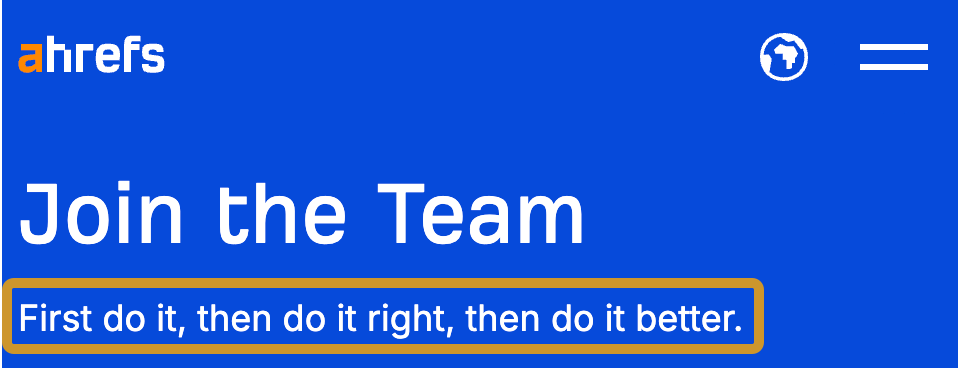
So, how do you build a culture that encourages being bold and taking risks?
Here are my suggestions:
- Prioritize long-term branding over short-term metrics — I once went viral on Threads. I earned a total of 0 followers. You may fool the algorithm a few times into rewarding you with millions of impressions, but that doesn’t mean you’ve built a successful brand that people trust and buy from. A strong brand is built over time, with bold messaging that stands out and differentiates from competitors.
- Use data as a guide, not a dictator — Data should back you up, not govern every step of your marketing strategy. Combine what the numbers tell you with your own creative instincts. Sometimes, the best marketing comes from the gut.
- Invest in experimentation — Set aside a portion of your marketing budget for experiments that have no immediate ROI expectations. Use the 80/20 rule: 80% of your marketing can be safe, proven methods, while 20% goes to a “risky” initiative.
- Look beyond your competitors for inspiration — Copying your competitors can only lead to a singularity where every product feature and campaign look the same. Don’t respond to clutter with more clutter. Seek inspiration from industries outside your own. For example, Amazon famously created Amazon Prime by modeling after airline loyalty programs.
Ultimately, you have to embrace failure as part of the process. Risk may be a dirty word for many marketing departments, but you have to acknowledge that not every idea will succeed.

Source: Marketoonist
Because even if you ‘fail’, learning from those mistakes can lead to better ideas in the future.
So, stop over-optimizing and take risks. Make things that are unforgettable for your target customers. The best marketing isn’t safe—it’s bold.
Content Copyrights Belong to The Author. All Rights Reserved.
We're A Dallas Digital Marketing Agency That is Experts At Social Media Marketing, Website Design and Emarketing and Promotion.



